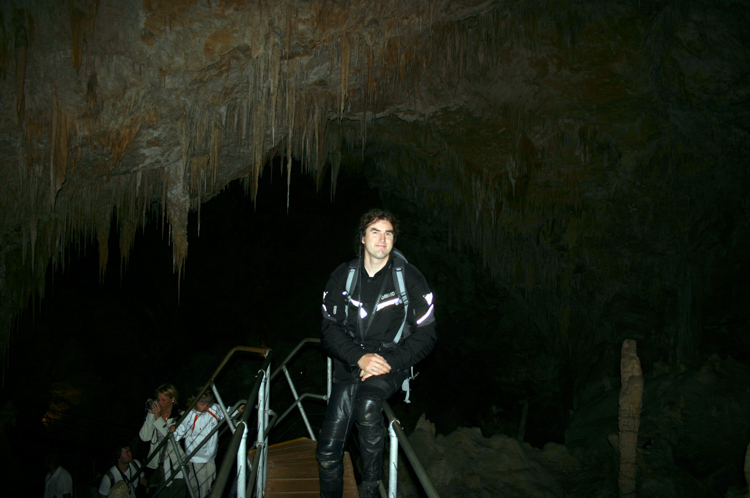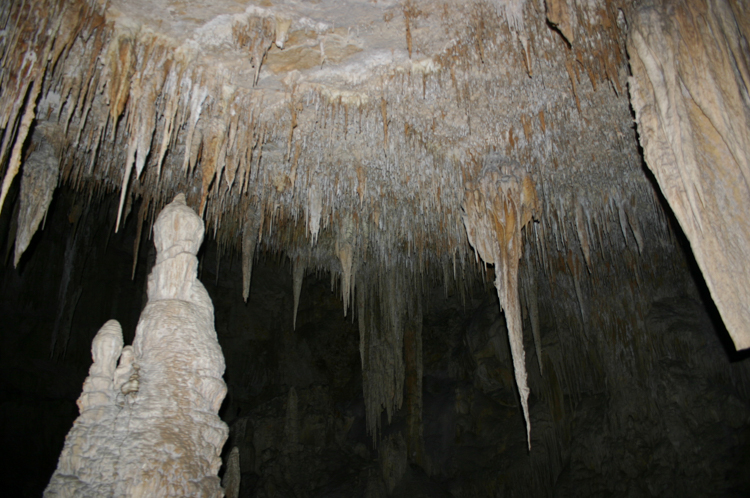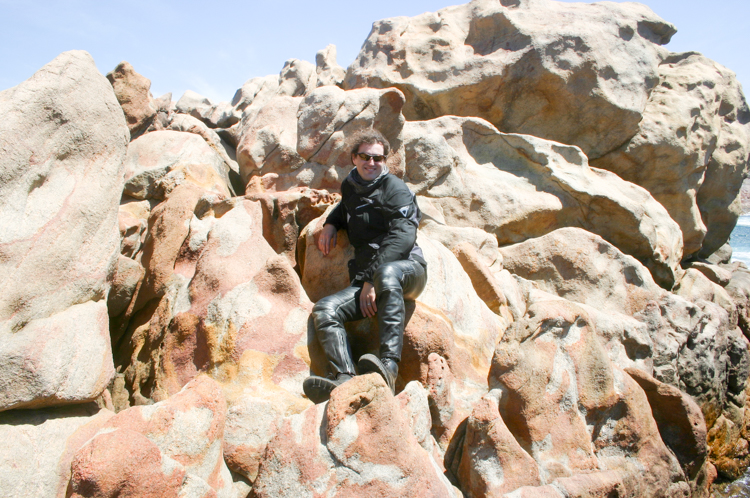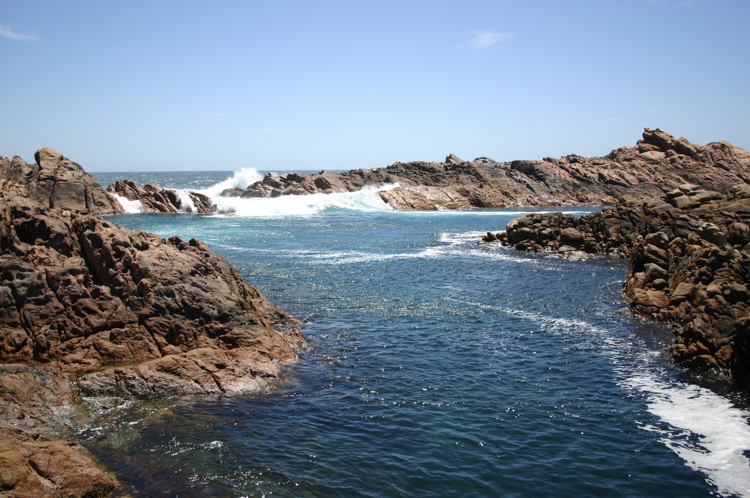A pleasant night at a vineyard B&B, and an equally pleasant morning chatting with the owner, a retired butcher, who cooked us some excellent sausages and answered all my presumably dumb questions about the rammed earth from which buildings hereabouts are constructed.
Heartbreak Trail
Looking around for another challenge after descending the Bicentennial Tree, I saw a roadsign that said something like “Heartbreak Trail blah blah prohibited blah blah dangerous”. This was obviously the direction that we needed to go.
Much of the soil in this area consists of marble-sized clay balls. The local construction method of ‘rammed earth’ involves mixing these balls with a little cement and pouring it into a form to build, well, just about anything. The thickness and air-gaps make for a good insulating layer, and the striking red colour blends into the equally ruddy landscape.
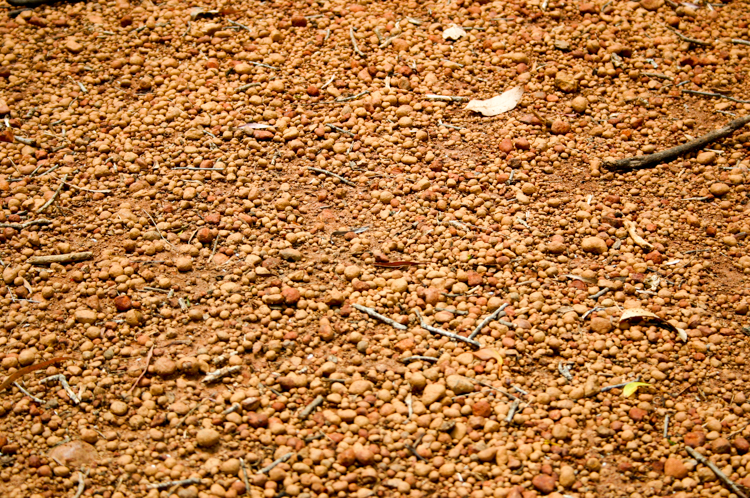
Little red marbles
I was interested to know how these little red marbles felt under the wheels, so off we rode into the bush.
The GS performed admirably, and the riding position, which had been pretty uncomfortable on the road, started to make sense on the dirt. The marbles weren’t anywhere near as awkward as, say, dry sand, and we had a very pretty tour of some deep forest with pristine waterfalls. It was here that we discovered that the wind that blows off the Southern Ocean is so laden with salt that the rivers in this region are slightly saline. Possibly this is the reason that this is the area for catching marrons, billed as the third largest crayfish in the world.
Eventually the dirt petered out into tarmac, and we trundled along at a steady 140 through endless forests until, with some shock, we came out amongst crowds of tourists in the town of Margaret River.
Margaret River
There seemed to be more people in this tiny little one-horse town than we had seen in our entire time in Western Australia. Margaret River is not unlike many such attractions, in that there is no real reason to go there apart from the fact that everybody does. Most such towns have had to build something as an excuse, such as the Worlds Largest Prawn / Trout / Merino Sheep / Playable Guitar, but we looked in vain for anything resembling a Worlds Largest Drinkable Bottle of Wine. Instead, we picked up a few supplies, and headed to the Island Brook Estate Vineyard, where we had booked accommodation for the night.
The chalets at the vineyard were superb, set in complete privacy deep in old-growth forest, and surrounded by mature black boys* (*for non-Australians, a black boy is a kind of grassy palm (Xanthorrhoea) that is designed to be burned by bush fires at regular intervals)
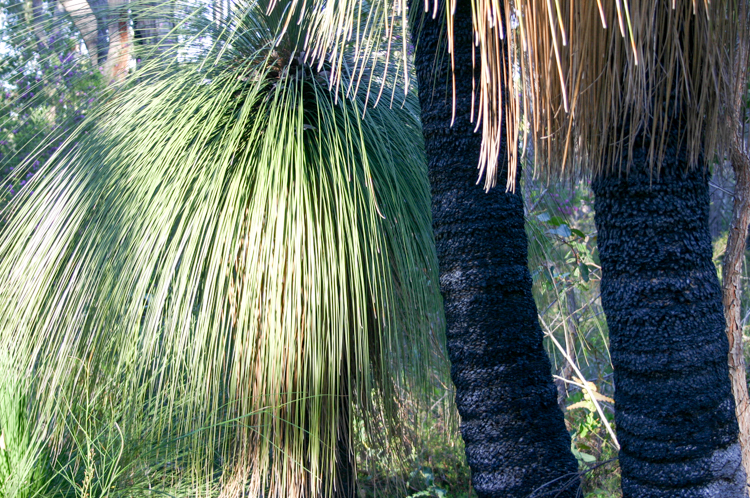
Xanthorrhoea in the Margaret River 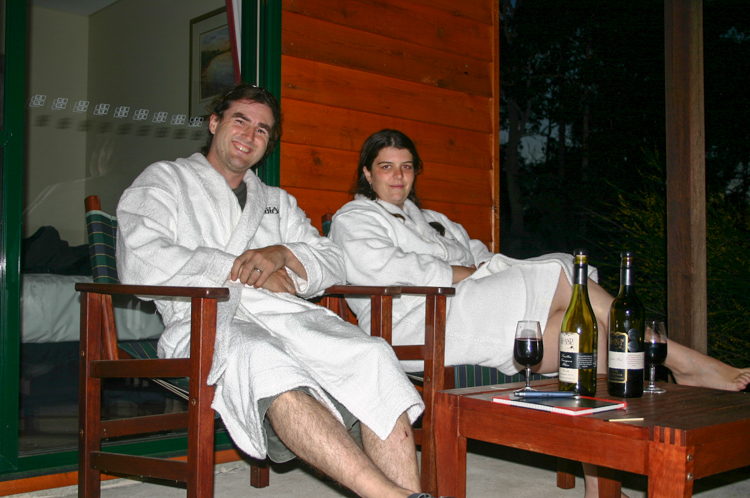
Luxury at the Island Brook Estate
After a very pleasant wine-tasting, we enjoyed drinking our purchases with barbecued steaks, on the deck under the stars.
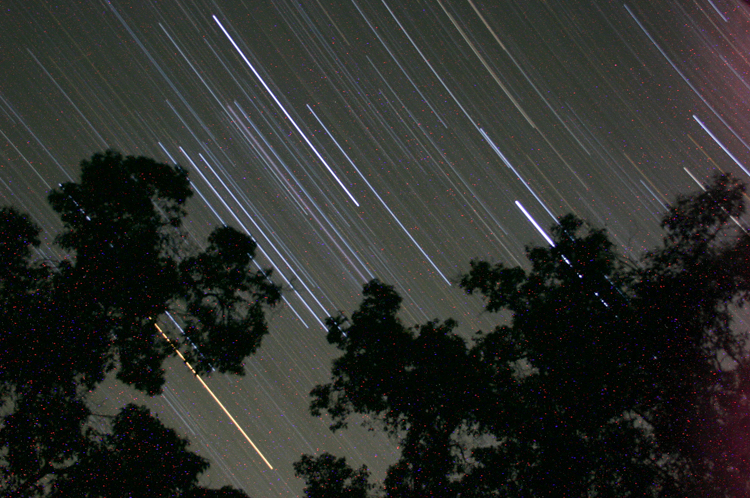
Starlight
A beautiful blue morning was heralded by the fluting of bush birds. The calls of these western lorikeets and cockatoos seemed much less raucous and more pleasant than those of their eastern counterparts (or maybe it was the wine). Under foot, the bush was alive with tiny flitting insectivores. It was perfect for a long walk before breakfast.
Mammoth Cave
Cave Road runs the entire length of the Margaret River peninsula, just a few vineyards away from the sea. It is named for the enormous caves at the southern end; Jewel Cave, Lake Cave, and Mammoth Cave. It can be hard to get a ticket to get in, but we managed a tour of Mammoth, so called because of its awesome size. Its a heavy tourist site, along prepared walkways with recorded guides on headphones, but well worth the visit.
These caves were not formed by the usual erosion of limestone, but instead by water trickling through sand dunes, forming a crusty cap over the underlying water table. The ceiling regularly collapses, which means that the floor is liberally scattered with the remains of overhead stalactites. All very impressive.
Canal Rocks
Further up Cave Road, a promontory of colourful gneiss has been eroded into a series of channels by the sea. These channels form a maze of rock walls, resulting in an impressive swirl of water as every incoming wave tries to force its way along the narrow canals. It is very unusual and quite beautiful.
Busselton Pier
After a hot but very interesting walk around Naturaliste Point, our tour of the peninsula ended at Busselton, which boasts The Longest Pier in The Southern Hemisphere. At almost 2km, the pier is the result of an arms-race between the need to service ore carriers, and the silting caused by the pier itself. The longer the pier got, the more it trapped sand and silted up, until finally the whole thing was destroyed by a cyclone.
Most of it has since been rebuilt, but parts of the old pier are still visible, particularly at the far end, where they have built a sort of reverse aquarium where you can climb down into a large tank and watch the fish go by. We gave that a miss, as we have scuba dived under many piers and the aquarium was pretty crowded, but the pier itself made a very pleasant walk.
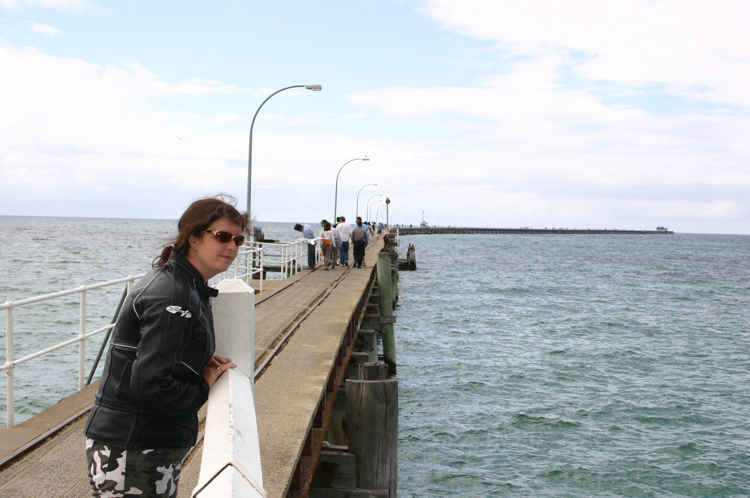
Bronwyn on the Second Longest Pier in the World 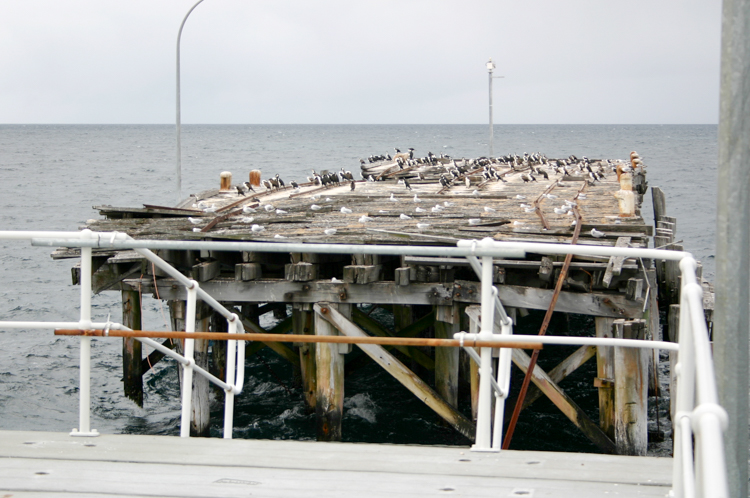
The old pier is strictly for the birds
For much of its length, the pier was lined with fishermen, some of whom were bringing up large cuttlefish which made an incredible inky mess. One nice touch was a line of memorial plaques to past residents who had, apparently, spent their lives fishing here.
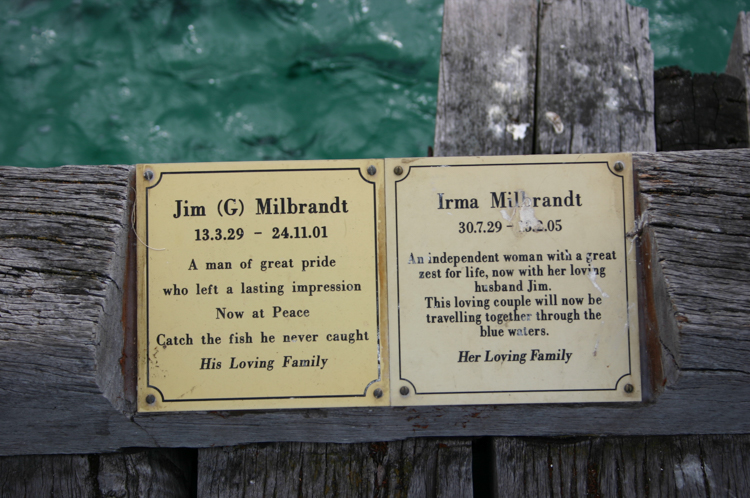
Memorial plaques on Busselton Pier
We spent some time watching a large Chinese family who were reeling in lines and crab pots with such dedication that it looked as if they were provisioning their restaurant for the evening; perhaps they were, because there certainly seemed to be no shortage of fish.
The pier had a very pleasant feel to it. Apparently there used to be a train that ran for much of its length, but it seemed that it had broken down one time too many, and the warped and twisted tracks now just gave one more reason to keep careful watch of your step when the pier narrowed, as it occasionally did, to just a couple of metres wide.
Journey’s End
It was time to return our rented GS to Bike Round Oz, so we rode back to the Darling Range, thanked Mark effusively, and boarded a commuter train into Perth.
We’d thoroughly enjoyed all the wines that Margaret River had had to offer, but it was time for a change of beverage, so after dumping our gear into a convenient backpacker’s, we repaired to the Brass Monkey, where we addressed ourselves to the Matilda Bay ales from the comfort of deep leather armchairs. Tomorrow we would explore Perth, but tomorrow was another day.
